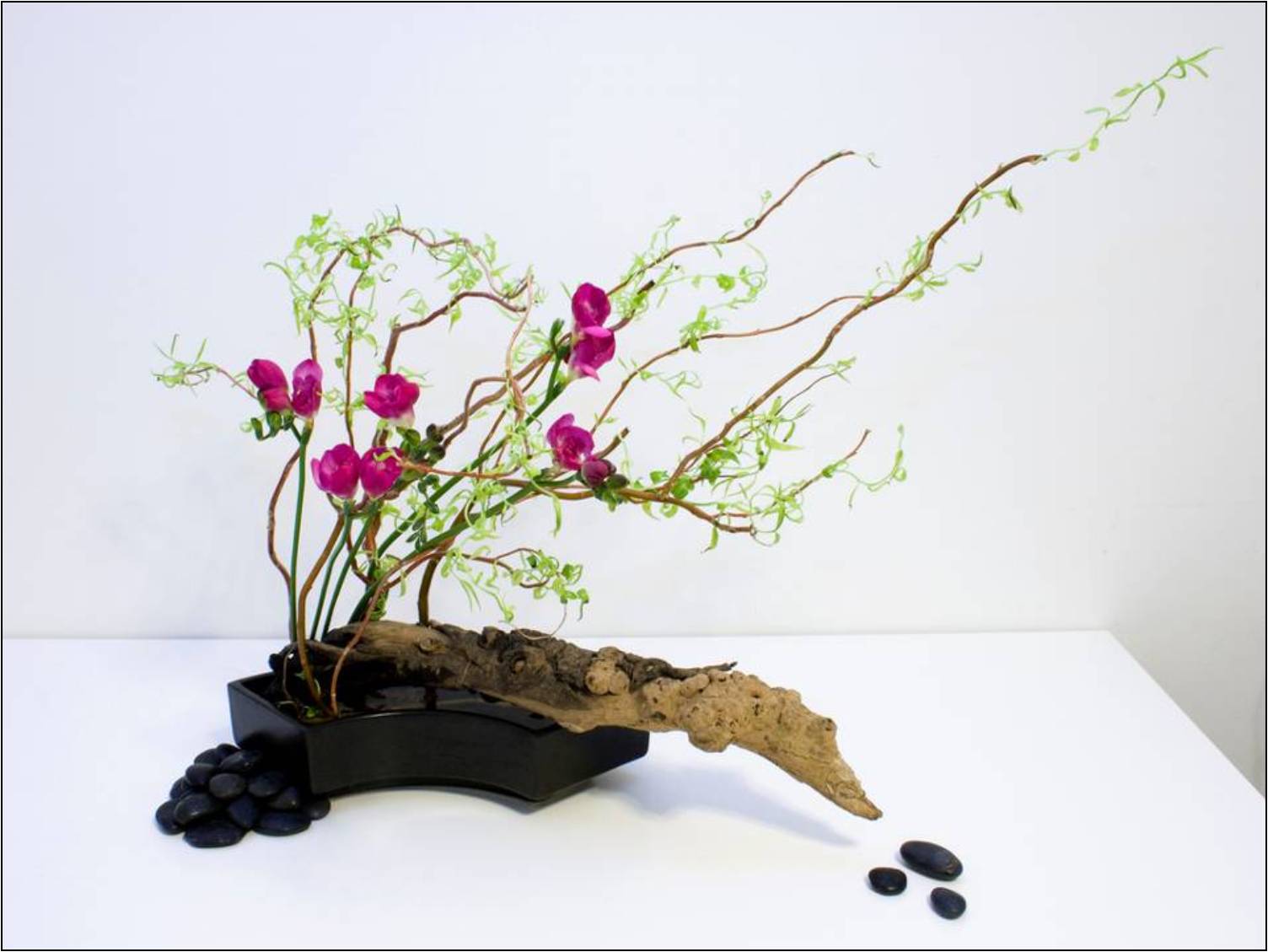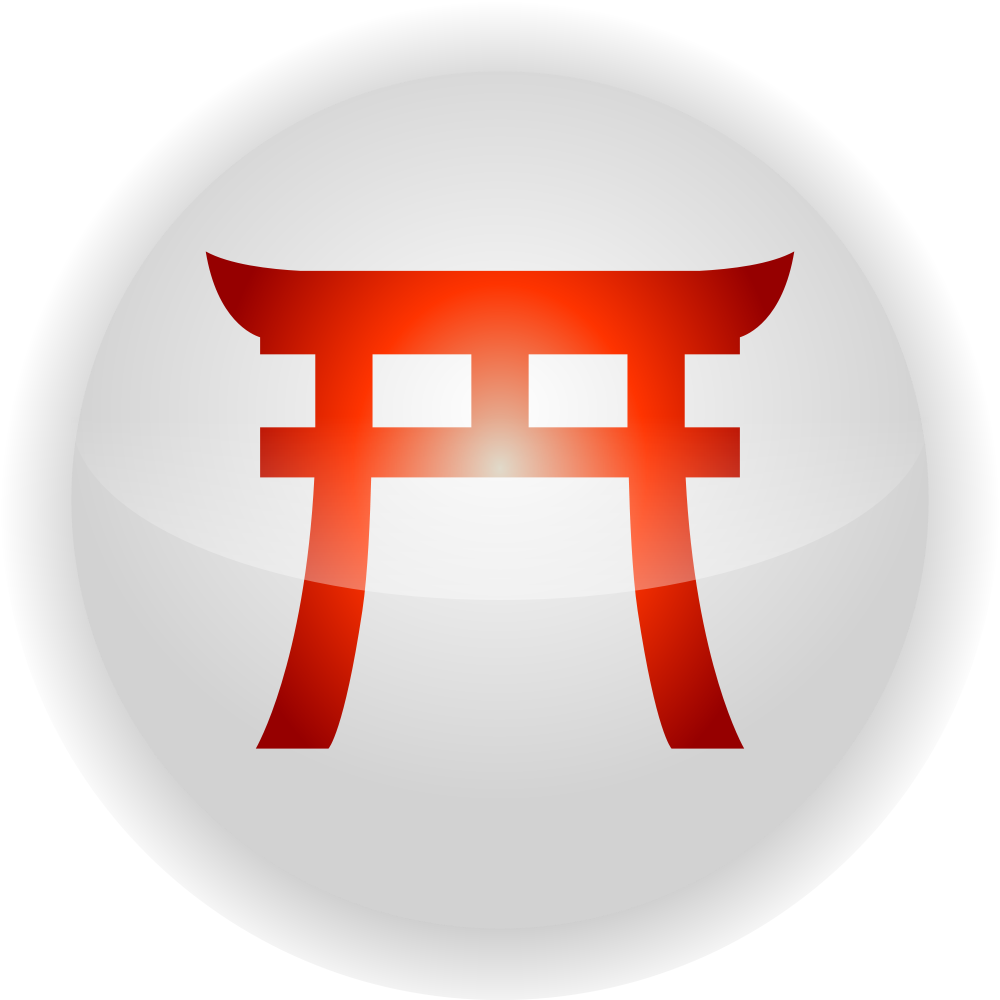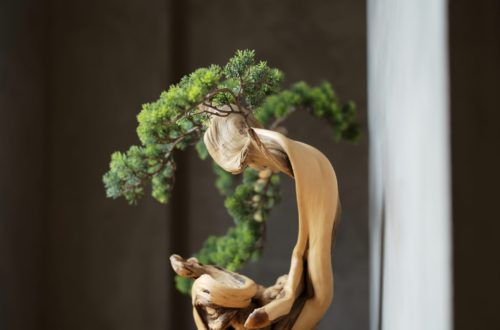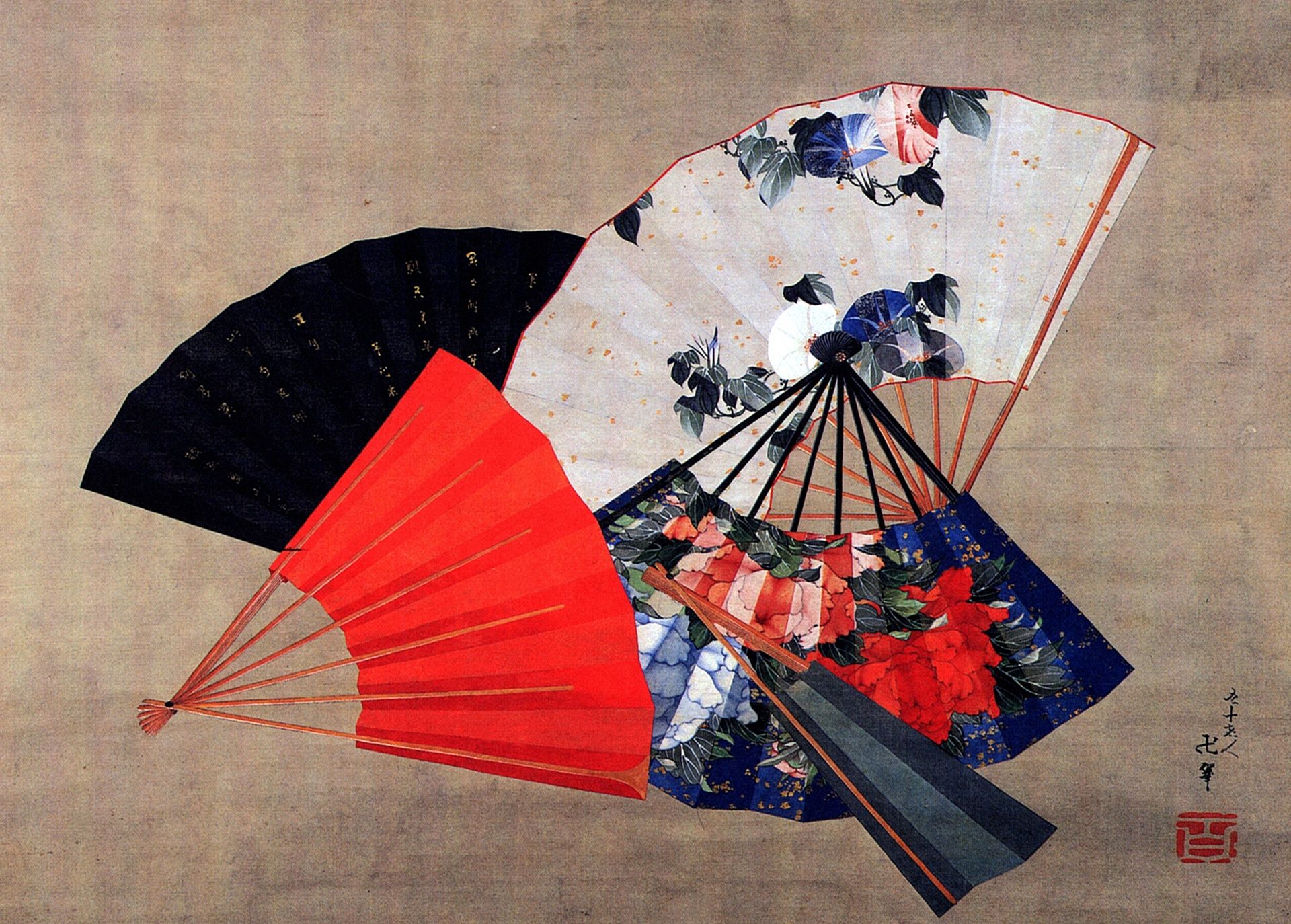
All about Japanese Fans – Uchiwa 団扇 and Sensu 扇子
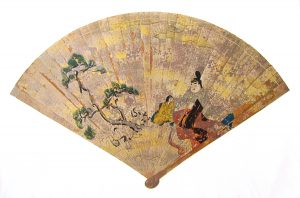 In ancient Japan, hand fans, such as oval and silk fans were influenced greatly by the Chinese fans. The earliest visual depiction of fans in Japan dates back to the 6th century CE, with burial tomb paintings showed drawings of fans. The folding fan was invented in Japan, with date ranging from the 6th to 9th centuries. It was a court fan called the Akomeogi (衵扇 Akomeōgi) after the court women’s dress named Akome. According to the Song Sui (History of Song), a Japanese monk Chonen (奝然 Chōnen, 938-1016) offered the folding fans (twenty wooden-bladed fans hiogi (桧扇 hiōgi) and two paper fans kawahori-ogi (蝙蝠扇 kawahori-ōgi) to the emperor of China in 988. Later in the 11th century, Korean envoys brought along Korean folding fans which were of Japanese origin as gifts to Chinese court. The popularity of folding fans was such that sumptuary laws were promulgated during Heian period which restricted the decoration of both hiogi and paper folding fans.
In ancient Japan, hand fans, such as oval and silk fans were influenced greatly by the Chinese fans. The earliest visual depiction of fans in Japan dates back to the 6th century CE, with burial tomb paintings showed drawings of fans. The folding fan was invented in Japan, with date ranging from the 6th to 9th centuries. It was a court fan called the Akomeogi (衵扇 Akomeōgi) after the court women’s dress named Akome. According to the Song Sui (History of Song), a Japanese monk Chonen (奝然 Chōnen, 938-1016) offered the folding fans (twenty wooden-bladed fans hiogi (桧扇 hiōgi) and two paper fans kawahori-ogi (蝙蝠扇 kawahori-ōgi) to the emperor of China in 988. Later in the 11th century, Korean envoys brought along Korean folding fans which were of Japanese origin as gifts to Chinese court. The popularity of folding fans was such that sumptuary laws were promulgated during Heian period which restricted the decoration of both hiogi and paper folding fans.
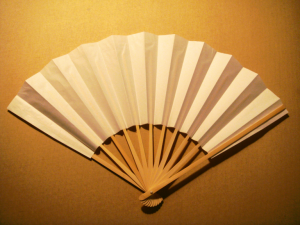
They were made by tying thin stripes of hinoki (or Japanese cypress) together with thread. The number of strips of wood differed according to the person’s rank. Later in the 16th century, Portuguese traders introduced it to the west and soon both men and women throughout the continent adopted it. They are used today by Shinto priests in formal costume and in the formal costume of the Japanese court (they can be seen used by the Emperor and Empress during enthronement and marriage) and are brightly painted with long tassels. Simple Japanese paper fans are sometimes known as harisen.
Printed fan leaves and painted fans are done on a paper ground. The paper was originally handmade and displayed the characteristic watermarks. Machine-made paper fans, introduced in the 19th century, are smoother, with an even texture. Even today, Geisha of all types (but maiko most often) use folding fans in their fan dances as well.
Japanese fans are made of paper on a bamboo frame, usually with a design painted on them. In addition to folding fans (ōgi), the non-bending fans (uchiwa) are popular and commonplace. The fan is primarily used for fanning oneself in hot weather. The uchiwa fan subsequently spread to other parts of Asia including Myanmar, Thailand, Cambodia and Sri Lanka and to this day are still used by Buddhist monks as “ceremonial fans”.
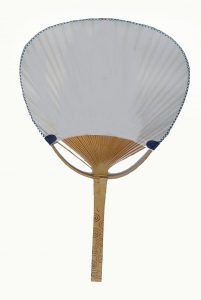 It was also used in the military as a way of sending signals on the field of battle, however fans were mainly used for social and court activities. In Japan, fans were variously used by warriors as a form of weapon, by actors and dancers for performances, and by children as a toy.
It was also used in the military as a way of sending signals on the field of battle, however fans were mainly used for social and court activities. In Japan, fans were variously used by warriors as a form of weapon, by actors and dancers for performances, and by children as a toy.
Traditionally, the rigid fan (also called fixed fan) was the most popular form in China, although the folding fan came into popularity during the Ming Dynasty between the years of 1368 and 1644, and there are many beautiful examples of these folding fans still remaining.
The Mai Ogi (or Japanese dancing fan) has ten sticks and a thick paper mount showing the family crest, and Japanese painters made a large variety of designs and patterns. The slats, of ivory, bone, mica, mother of pearl, sandalwood, or tortoise shell, were carved and covered with paper or fabric. Folding fans have “montures” which are the sticks and guards, and the leaves were usually painted by craftsmen. Social significance was attached to the fan in the Far East as well, and the management of the fan became a highly regarded feminine art. Fans were even used as a weapon – called the iron fan, or tessen in Japanese.
